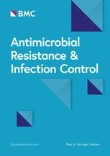Acute graft-versus-host disease (aGVHD) after allogeneic hematopoietic stem cell transplant (SCT) is treated with corticosteroids, placing patients at risk for steroid myopathy. In this single-arm cohort study, 23 patients who were started on high-dose corticosteroids for aGVHD underwent a series of functional tests (baseline, Day 14, 28, 56): six-minute walk test (6MWT), hip flexors (HF) and knee extensors (KE) strength via dynamometry, five times sit-to-stand (5xSTS), Brooke scale for myopathy, modified Adult Myopathy Assessment Tool (AMAT), and manual muscle testing (MMT). Participants were prescribed home exercises including walking and resistance exercises, with low adherence. Fifteen (63%) participants were male and median (range) age 60 (36-70) years old. Median (range) corticostero id duration and cumulative equivalent methylprednisolone dose were 66 (22-165) days and 3625 (1020-11720) milligrams, respectively. At Day 14, there was a significant decline in 5xSTS (P=.0132), KE (P=.0182), and MMT (P=.0466). Functional tests negatively-associated with cumulative corticosteroid dose included: 6MWT distance (P=.0103), HF strength (P=.0262), KE strength (P=.0369), manual muscle testing strength (P=.0319). 5xSTS was positively associated with corticosteroid dose (P=.0003). In conclusion, SCT patients receiving high-dose corticosteroids for aGVHD are at risk for weakness detected as early as Day 14. Increasing adherence to exercise may mitigate these changes. *Currently at Baylor College of Medicine, Houston, TX; but work for this study was conducted at University of Texas MD Anderson Cancer Center Corresponding author: An Ngo-Huang, DO, Department of Palliative, Rehabilitation, and Integrative Medicine, The University of Texas MD Anderson Cancer Center, 1515 Holcombe Boulevard, Unit 1414, Houston, TX 77030; Tel: 713-745-2327; Fax: 713-792-6092; E-mail: ango2@mdanderson.org Disclosure of Conflicts of Interest: The authors declare no competing financial interests. This was an unfunded study. Results from this study were presented at the 2018 American Congress of Rehabilitation Medicine Annual Meeting as a poster presentation: Ngo-Huang A, Yadav R, Bansal S, Williams J, Liu D, Wu J, Alousi A, Fu JB, Bruera E. Changes in Physical Function in Stem Cell Transplant Patients at Risk for Steroid Myopathy. Archives of Physical Medicine and Rehabilitation 99(12):E194, 12/2018. Copyright © 2020 Wolters Kluwer Health, Inc. All rights reserved.






